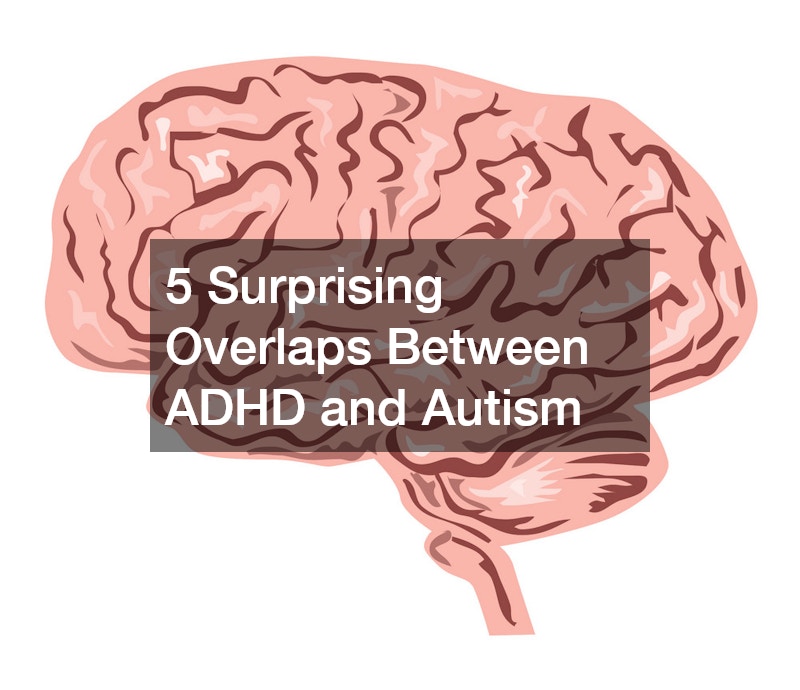Attention Deficit Hyperactivity Disorder (ADHD) and Autism Spectrum Disorder (ASD) are often considered separately, but many individuals experience both conditions simultaneously. Understanding the overlaps between ADHD and autism can provide valuable insights into their shared traits and challenges. For those managing these intersecting characteristics, consulting with an ADHD therapist or autism specialist can be particularly helpful. Here are five surprising overlaps between ADHD and autism.
1. Irritability and Hyper Focus
One of the notable overlaps between ADHD and autism is the challenge of balancing focus and restlessness. Individuals with autism are known for their ability to hyper-focus on specific tasks or interests for extended periods. This intense concentration can lead to a deep mastery of their chosen topics.
However, those with ADHD often experience restlessness that disrupts their ability to maintain this focus. This can manifest as a need to take frequent breaks, move around, or shift attention to different activities. The clash between the ability to intensely focus and the compulsion to seek new stimuli can be a significant source of frustration and conflict for individuals with both conditions.
2. Special Interests vs. Rapid Interest Switching
Another intriguing overlap is the contrast between special interests and rapid interest switching. People with autism often develop intense, specialized interests that they pursue with great enthusiasm. These interests can become a central part of their identity and provide a deep sense of satisfaction and engagement.
Conversely, ADHD can lead to a tendency to switch interests quickly and frequently. This rapid shifting can prevent individuals from fully exploring any single topic as their focus shifts to new areas of interest. This dynamic can create a unique experience where deep, sustained interests compete with a propensity for change and novelty.
3. Fast Speech and Monotone Talking
Communication patterns in ADHD and autism can also intersect in interesting ways. ADHD is often associated with rapid, sometimes disjointed speech, reflecting a mind that is racing through thoughts and ideas. This fast-paced talking can make conversations feel chaotic or fragmented.
On the other hand, autism may lead to a more monotone, flat style of speaking. This form of communication is characterized by a lack of inflection and variation in tone, which can come across as robotic or impersonal. The combination of these traits—fast speech from ADHD and monotone delivery from autism—can result in a unique but sometimes challenging communication style.
4. Desire for Social Interaction vs. Social Anxiety
The social dynamics for individuals with ADHD and autism often present a complex interplay of desires and anxieties. Those with ADHD may actively seek social interactions and thrive in environments that offer stimulation and novelty. They might enjoy engaging with others and participating in dynamic social activities.
In contrast, autism can bring about significant social anxiety. Despite a desire to connect with others, individuals on the autism spectrum may experience overwhelming discomfort in social settings, such as parties or public gatherings. This contrast creates a scenario where the urge for social engagement is tempered by a substantial level of social anxiety, leading to a push-pull dynamic in social interactions.
5. Talking a Lot but Forgetting
The experience of conversing while simultaneously dealing with memory lapses is another common overlap between ADHD and autism. Individuals with autism may have a strong desire to talk about their specific interests extensively. They might be able to share detailed information and insights with passion and depth.
However, those with ADHD might struggle with maintaining focus during conversations, leading to instances where they start talking about a topic but then lose their train of thought. This can result in abrupt interruptions or incomplete stories, where the individual forgets the point they were making. This combination of thorough knowledge and occasional forgetfulness can create a unique conversational experience, marked by both richness and occasional disruption.
Final Thoughts
Understanding the overlaps between ADHD and autism helps simplify the complexity of these conditions. Recognizing how traits like focus versus restlessness, shifting interests, communication styles, and social challenges intersect can offer useful insights. By exploring these shared characteristics, we gain a clearer view of the experiences of those who live with both ADHD and autism.
.







